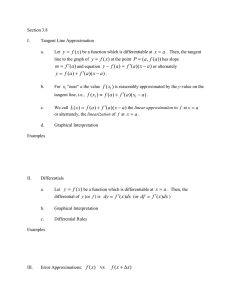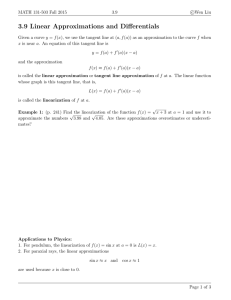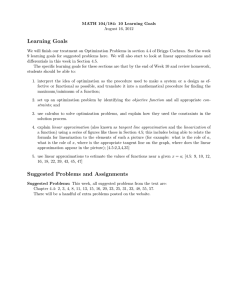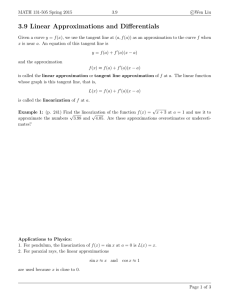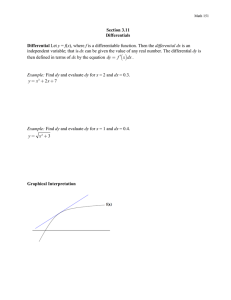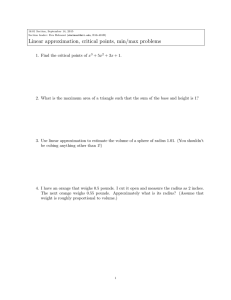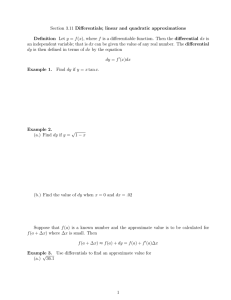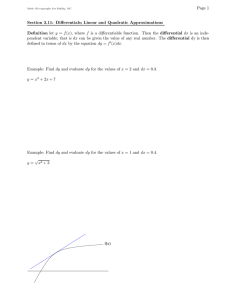1 In Class Questions MATH 151-Fall 02 October 17
advertisement
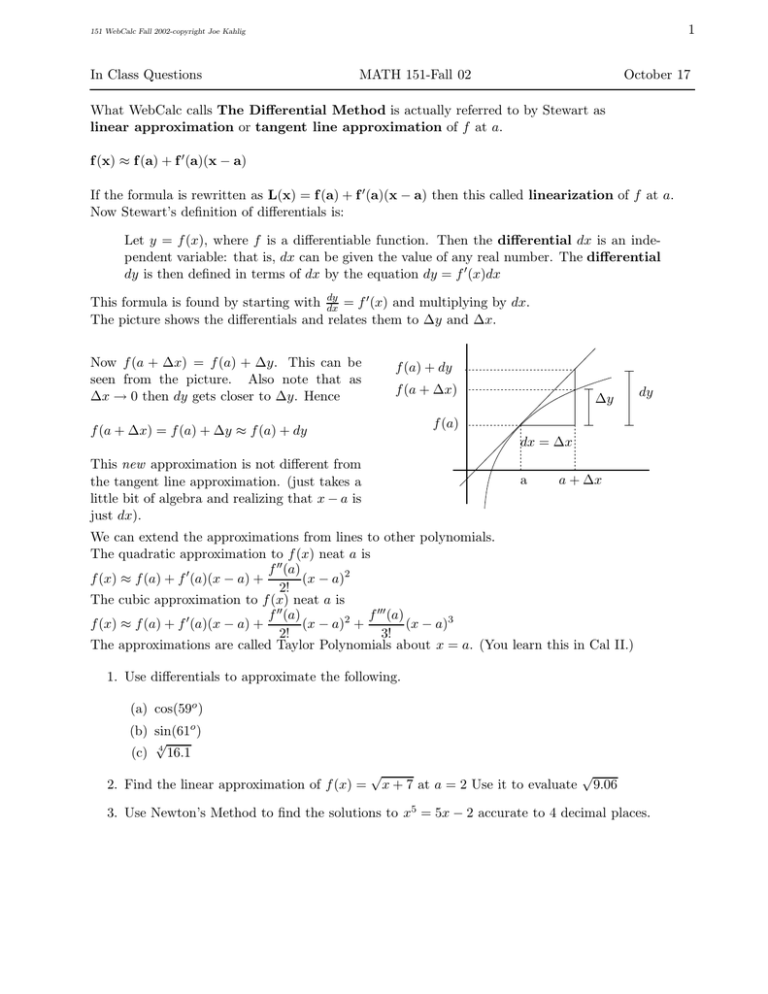
1 151 WebCalc Fall 2002-copyright Joe Kahlig In Class Questions MATH 151-Fall 02 October 17 What WebCalc calls The Differential Method is actually referred to by Stewart as linear approximation or tangent line approximation of f at a. f (x) ≈ f (a) + f 0 (a)(x − a) If the formula is rewritten as L(x) = f (a) + f 0 (a)(x − a) then this called linearization of f at a. Now Stewart’s definition of differentials is: Let y = f (x), where f is a differentiable function. Then the differential dx is an independent variable: that is, dx can be given the value of any real number. The differential dy is then defined in terms of dx by the equation dy = f 0 (x)dx dy This formula is found by starting with dx = f 0 (x) and multiplying by dx. The picture shows the differentials and relates them to ∆y and ∆x. Now f (a + ∆x) = f (a) + ∆y. This can be seen from the picture. Also note that as ∆x → 0 then dy gets closer to ∆y. Hence f (a) + dy f (a + ∆x) ∆y dy f (a) f (a + ∆x) = f (a) + ∆y ≈ f (a) + dy dx = ∆x This new approximation is not different from the tangent line approximation. (just takes a little bit of algebra and realizing that x − a is just dx). a a + ∆x We can extend the approximations from lines to other polynomials. The quadratic approximation to f (x) neat a is f 00 (a) f (x) ≈ f (a) + f 0 (a)(x − a) + (x − a)2 2! The cubic approximation to f (x) neat a is f 00 (a) f 000 (a) f (x) ≈ f (a) + f 0 (a)(x − a) + (x − a)2 + (x − a)3 2! 3! The approximations are called Taylor Polynomials about x = a. (You learn this in Cal II.) 1. Use differentials to approximate the following. (a) cos(59o ) (b) sin(61o ) √ (c) 4 16.1 2. Find the linear approximation of f (x) = √ √ x + 7 at a = 2 Use it to evaluate 9.06 3. Use Newton’s Method to find the solutions to x5 = 5x − 2 accurate to 4 decimal places.
